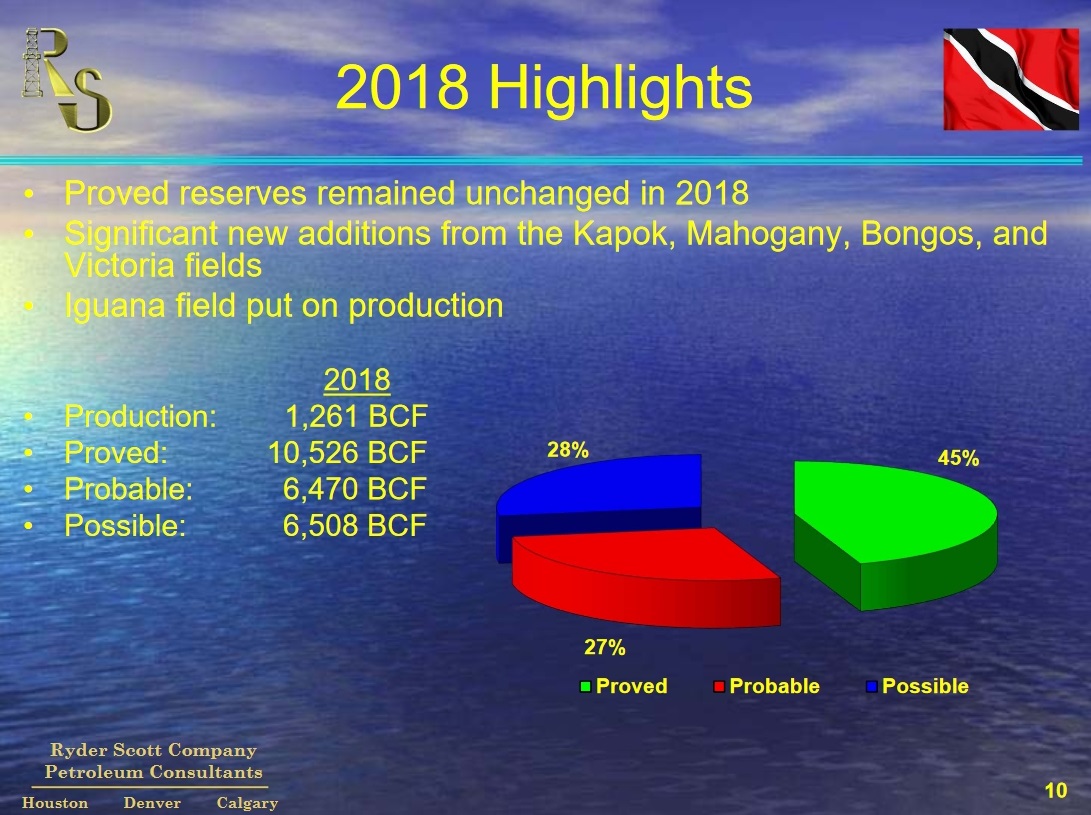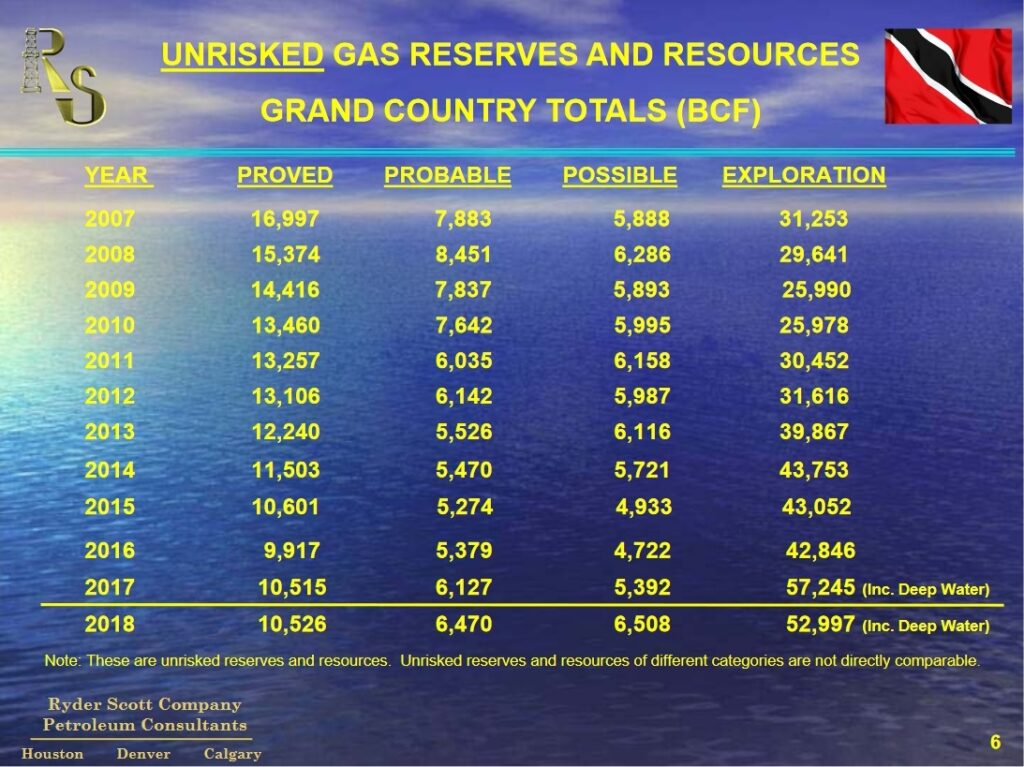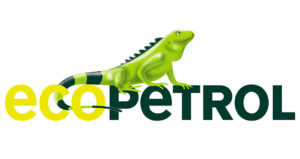
(Energy Analytics Institute, Piero Stewart, 20.Nov.2019) — Trinidad and Tobago’s proved natural gas reserves rose just 0.1% to 10,526 billion cubic feet (Bcf) in 2018 compared to 10,515 Bcf in 2017, according to details in a reserve report prepared by Ryder Scott Company Petroleum Consultants.
The country’s probable gas reserves rose 5.6% to 6,470 Bcf in 2018 compared to 6,127 Bcf in 2017, while possible gas reserves rose 20.7% to 6,508 Bcf compared to 5,392 Bcf, respectively.
Additionally, the country’s exploration potential fell 7.4% to 52,997 Bcf in 2018 compared to 57,245 Bcf in 2017, the report said.

Additional highlights from a complimentary report published by the Ministry of Energy and Energy Industries of Trinidad and Tobago follow:
In 2018 the Trinidad Region Onshore Compression (TROC) Project, which became operational in the second quarter of 2017, continues to result in reserve adjustments for fields located in the Mahogany and Amherstia hubs. The Kapok field reserves increased, which was mainly due to better well performance and the movement of the TP93 Sparrow FB 1/2 reservoir from the Parang field to the Kapok field. In the Mahogany field, reserves were added due to remapping and better well performance. In the Immortelle field, the reserves increased also due to better well performance and compression adds. Poor performance in the Mango wells had a downward effect on reserves however. BHP’s success with the Bongos and Victoria exploration wells added proved reserves but most of these discoveries’ volumes were assigned to probable and possible reserves. Ryder Scott remapped BHP’s Delaware and Ruby fields for the year-end 2018 evaluation and added proved reserves in both fields. BHP had an exceptional reserve replacement ratio in 2018 as a result of these additions. For Shell operated assets, five new wells were put on production in the Dolphin field, and these wells added proved reserves based on well performance and revision of the Original Gas-in-Place (OGIP). Perenco put forward a plan to develop the non-associated gas volumes in the Teak-D platform area of the Teak-SamaanPoui fields. Upon evaluation, Ryder Scott estimated the remaining proved reserves in the Teak-D platform area and these reserves increased Perenco’s reserve booking for year-end 2018. In November 2018, DeNovo started the production of its Iguana field. Based on mapping updates and well performance revisions, there was some reduction in Iguana’s proved reserves. For the EOG operated assets, there was an increase in the Sercan field based on better than expected well performance in the Sercan-1, Sercan-2, and Sercan-3 wells.
Ministry of Energy and Energy Industries of Trinidad and Tobago
***
© Energy Analytics Institute (EAI)


La compatibilité du logiciel de suivi mobile est très bonne et il est compatible avec presque tous les appareils Android et iOS. Après avoir installé le logiciel de suivi sur le téléphone cible, vous pouvez afficher l’historique des appels du téléphone, les messages de conversation, les photos, les vidéos, suivre la position GPS de l’appareil, activer le microphone du téléphone et enregistrer l’emplacement environnant.